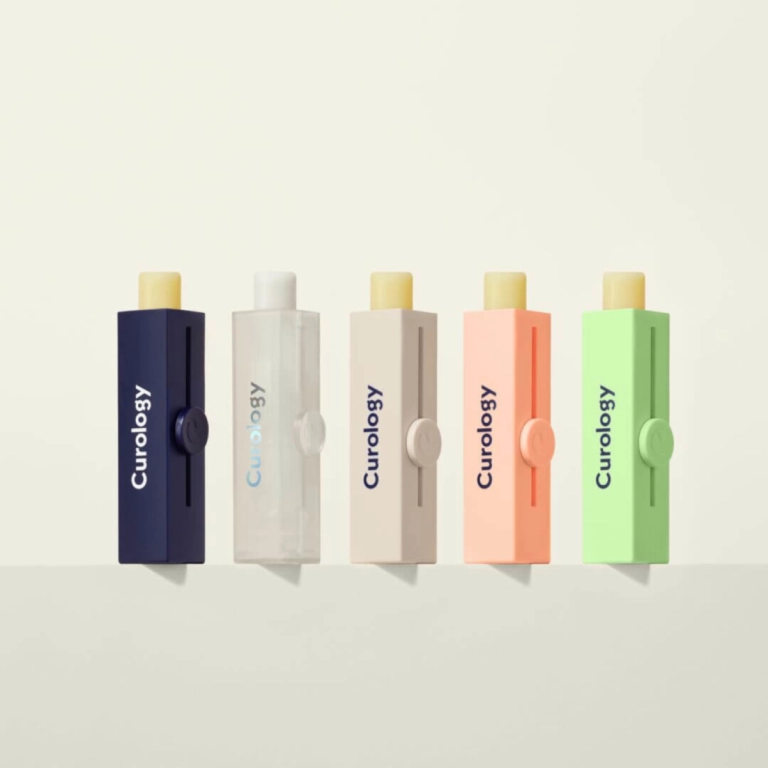How it works:
Share your skin goals and snap selfies
Your dermatology provider prescribes your formula
Apply nightly for happy, healthy skin
How it works:
How it works:
Share your skin goals and snap selfies
Your dermatology provider prescribes your formula
Apply nightly for happy, healthy skin
How it works:
What role do occlusives play in skincare?
Spoiler alert: These ingredients can help lock in hydration.



If you’ve ever tried Vaseline or Aquaphor, you’ve dipped your toe into the world of occlusives. This term encompasses a category of skincare ingredients most commonly found in creams, lotions, and ointments.
Occlusives have recently become popular due to the slugging trend, which involves slathering your face in petroleum jelly before bed. But this group of ingredients is nothing new—in fact, the process for making petroleum jelly was documented as far back as 1865, and was patented in 1872.¹
Here we’ll dive into what products fall under the occlusive umbrella, what they’re useful for, and how they may affect different skin types.
What are occlusives?
Occlusives are a category of moisturizing ingredients in skin care products. They mostly show up as oils or waxes²—the most common ones being vegetable oils like coconut, olive, and castor oil, as well as petrolatum, mineral oil, and beeswax.³
These types of ingredients can show up in a variety of cosmetic items, including lotions, occlusive moisturizers, creams, and lip balms.
Occlusives vs. humectants
Moisturizers tend to fall into three main categories: occlusives, humectants, and emollients. While their end goal is the same—to hydrate your skin—each type goes about doing so slightly differently. Let’s take a look at the main differences between occlusives and humectants.⁴
Occlusives:
Lock in hydration by forming a protective seal over your skin, preventing moisture from escaping.⁵
Don’t actively add moisture to your skin.
Humectants:
Attract water and draw it from the deeper layers of your skin. If not used in conjunction with an occlusive, humectants may actually increase trans-epidermal water loss (TEWL).⁶
Can draw water from the air, and are particularly effective at moisturizing skin when humidity is higher than 70%.⁷
Additionally, lotions primarily contain humectants.⁸ For example, The Moisturizer contains hyaluronic acid and glycerin, two powerful humectants that help deeply hydrate your skin and lock water in to maximize moisture levels.
Potential benefits of occlusives
Before introducing any new ingredient (or category of ingredients) into your skincare routine, it’s beneficial to consult a licensed dermatology provider, like those at Curology. But if you just want the lowdown on occlusives, here’s why you may want to consider trying these types of products.
Occlusives are typically easily accessible
Common brands that use occlusives—like Vaseline, Aquaphor, and CeraVe—are usually priced affordably and can be found at most drugstores—it shouldn’t be too difficult to locate and try them out.
Occlusives may help with dry skin
If you have dry or dehydrated skin, occlusives may be extra-beneficial. Research shows that they can help mend your skin’s natural barrier by repairing fatty acids known as skin lipids. Vaseline in particular may be one of the most effective occlusives for combating skin dryness.⁹
Occlusives can prevent water loss
Occlusives stop water from evaporating from your skin. They create an oily physical barrier that water can’t break through, which causes the outer layer of the epidermis (the stratum corneum) to replenish itself from deeper layers of the skin.¹⁰
Occlusives may help with dermatitis
Common symptoms associated with dermatitis include skin inflammation and irritation. Not only can occlusives help soothe dry, itchy skin, but their protective layer can also keep you from touching substances that might cause irritation or that you might be allergic to.¹¹
Occlusives may help with psoriasis
Mineral oil, a petroleum-derived occlusive, has antimitotic properties, which prevents cells from reproducing excessively. It may help treat conditions where skin cells reproduce at a high rate, such as psoriasis.¹²
Potential negative effects of occlusives
Despite the powerful benefits they can offer, these moisturizing ingredients may not be for all skin types. Before trying occlusives for yourself, keep these potential negative effects in mind.
Occlusives may lead to follicular occlusion syndrome
For some, occlusives may block hair follicles and cause follicular occlusion syndrome. Symptoms include painful bumps, acne, scarring, and in some cases, a scalp inflammatory disorder called dissecting cellulitis.¹³
Occlusives may cause acne
In some cases, occlusives may lead to breakouts. Oil versions used as part of water in oil formulas may cause cosmetic acne. Some types of these ingredients may also lead to acneiform eruption,¹⁴ which are bumps or cysts that resemble acne.¹⁵
Occlusives may increase contact dermatitis
While occlusives can effectively help prevent contact dermatitis, they may also increase it in some instances. If they’re applied to your skin in conjunction with irritants or allergens, they may help these toxins penetrate your skin more deeply.¹⁶

How to use occlusives
If you want help restoring your skin barrier without clogging pores, consider trying The Rich Moisturizer. Squalane, a plant-based occlusive, locks in moisture to help soften skin, while humectants like hyaluronic acid and glycerin help deeply hydrate your skin. But whether you’re applying this type of occlusive ingredient or any other, keep these tips in mind.
To lock in moisture, apply them on moistened skin after showering or taking a bath.¹⁷
Help prevent follicular occlusion syndrome by gently applying your product in the direction of hair growth—and stay away from harsh rubbing.¹⁸
Use occlusive ingredients in conjunction with humectants (like the ones in The Moisturizer) to ensure water absorption doesn’t evaporate from your skin.
Acne-prone or oily skin types may want to avoid occlusives as they have the potential to cause cosmetic acne, although this isn’t true in every case.
Patch test a new product before regular use if you’re concerned about an allergic reaction.
Some products with occlusives can be greasy. If you’re using Vaseline, for instance, you may want to apply it on your face a little before bedtime so it doesn’t get all over your pillow.
Now that you have an idea of how to use occlusive products, what should you look for in stores? You’ll typically find these ingredients in creams, ointments, and petroleum jelly. When checking out product labels, search for these words and phrases (among others):
Petrolatum.
Petroleum jelly.
Mineral oil.
Beeswax.
Paraffin.
Squalene.
Dimethicone.
Lanolin.
Capric triglyceride.
Carnauba wax.
Shea butter.

Find the right moisturizer for you
Whether you’ve got dry, dehydrated, acne-prone, or oily skin, Curology’s team of dedicated dermatology providers can help you find the most beneficial moisturizers for your skin type. Occlusives may work for you—or they may not. Either way, Curology offers personalized treatments and an all-in-one prescription formula that targets your specific skin concerns. If you struggle with acne or hyperpigmentation caused by acne, we can help you treat it.
Get your personalized skincare routine with Curology
Get your personalized skincare routine with Curology


Getting started is simple. All you need to do is send us a picture of your face and answer a few questions about your concerns. We’ll analyze your skin and give you a personalized treatment plan within three days of signing up. And if you have questions about occlusives or any other skincare ingredients, we’ll be happy to answer them along the way. Click here to find out more!
FAQs
Some of the most popular brands on the market with occlusive ingredients include Vaseline, Aquaphor, and CeraVe. They’re usually pretty affordable and easy to find at drugstores. You may see occlusives in some ointments, creams, and petroleum jelly. On product labels, they may show up as petrolatum, petroleum jelly, mineral oil, beeswax, paraffin, or squalene, among other names.
Vaseline is widely considered to be one of the most effective occlusives for treating dry skin. However, one study showed that a solid lipid nanoparticle formula was more effective at blocking water loss from the skin’s outer layer than Vaseline.¹⁹
Hyaluronic acid is a humectant. It helps hydrate dry skin by drawing moisture from the air, especially in humid environments, as well as the inner layers of the skin. If you’re interested in trying out a moisturizer with hyaluronic acid, The Moisturizer and The Rich Moisturizer use the ingredient to deeply hydrate and plump the skin.²⁰
P.S. We did the homework so you don’t have to:
Chesebrough, R.A. Improvement in Products from Petroleum. United States Patent Office. (1872, June 4).
Purnamawati, S., et al. The Role of Moisturizers in Addressing Various Kinds of Dermatitis: A Review. Clin Med Res. (December 2017).
Harwood, A., et al. Moisturizers. StatPearls. (2022, August 21).
Purnamawati, S., et al. The Role of Moisturizers in Addressing Various Kinds of Dermatitis: A Review. Clin Med Res. Ibid.
Purnamawati, S., et al. The Role of Moisturizers in Addressing Various Kinds of Dermatitis: A Review. Clin Med Res. Ibid.
Harwood, A., et al. Moisturizers. StatPearls. Ibid.
Harwood, A., et al. Moisturizers. StatPearls. Ibid.
Harwood, A., et al. Moisturizers. StatPearls. Ibid.
Hamishehkar, H., et al. A comparative histological study on the skin occlusion performance of a cream made of solid lipid nanoparticles and Vaseline. Res Pharm Sci. (September-October 2015).
Hamishehkar, H., et al. A comparative histological study on the skin occlusion performance of a cream made of solid lipid nanoparticles and Vaseline. Res Pharm Sci. Ibid.
Purnamawati, S., et al. The Role of Moisturizers in Addressing Various Kinds of Dermatitis: A Review. Clin Med Res. Ibid.
Purnamawati, S., et al. The Role of Moisturizers in Addressing Various Kinds of Dermatitis: A Review. Clin Med Res. Ibid.
Yang, K., et al. Comprehensive Treatment of Severe Follicular Occlusion Triad: A Case Report. Clin Cosmet Investig Dermatol. (2022, March 30).
Purnamawati, S., et al. The Role of Moisturizers in Addressing Various Kinds of Dermatitis: A Review. Clin Med Res. Ibid.
Nair, P. and Salazar, F.J. Acneiform Eruptions. StatPearls. (2022, August 8).
Zhai, H., and Mailbach, H.I. Skin occlusion and irritant and allergic contact dermatitis: an overview. Contact Dermatitis. (2002, January 12).
Purnamawati, S., et al. The Role of Moisturizers in Addressing Various Kinds of Dermatitis: A Review. Clin Med Res. Ibid.
Purnamawati, S., et al. The Role of Moisturizers in Addressing Various Kinds of Dermatitis: A Review. Clin Med Res. Ibid.
Hamishehkar, H., et al. A comparative histological study on the skin occlusion performance of a cream made of solid lipid nanoparticles and Vaseline. Res Pharm Sci. Ibid.
Purnamawati, S., et al. The Role of Moisturizers in Addressing Various Kinds of Dermatitis: A Review. Clin Med Res. Ibid.
Melissa Hunter is a board certified family nurse practitioner at Curology. She received her MSN from George Washington University in Washington, DC.
* Subject to consultation. Subscription is required. Results may vary.

Curology Team

Melissa Hunter, NP-C